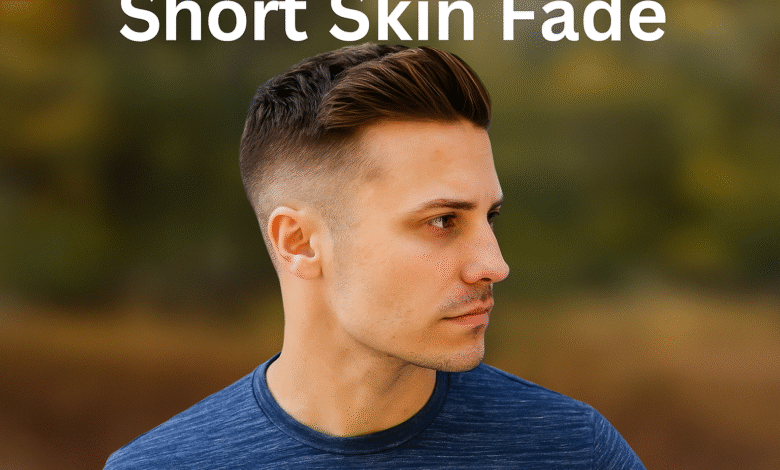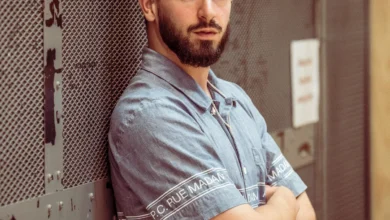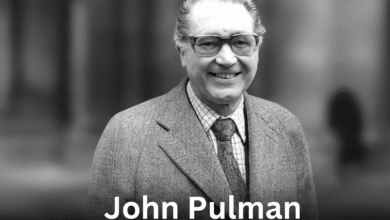Short Skin Fade: The Ultimate Guide to a Timeless and Stylish Haircut

The short skin fade has become one of the most admired men’s hairstyles worldwide. With its clean-cut appearance, sharp contrast, and versatile styling options, it offers a balance of modern fashion and timeless masculinity. Whether worn by athletes, celebrities, or everyday men, this haircut speaks volumes about personality and confidence.
Although the short skin fade may appear simple at first glance, it carries a rich history and cultural significance. From military roots to fashion-forward trends, it has transformed into a hairstyle that represents both discipline and individuality. This article explores everything you need to know about the short skin fade, from its origins and variations to its influence and legacy.
Quick Bio
| Attribute | Details |
| Name | Short Skin Fade |
| Type | Men’s Hairstyle |
| Origin | Mid-20th Century, Military |
| Popular Variations | Low Fade, Mid Fade, High Fade |
| Cultural Impact | Military, Sports, Hip-Hop, Everyday Fashion |
| Maintenance | Every 2–3 Weeks |
| Known For | Clean, Sharp, Versatile Look |
The Origins of the Short Skin Fade
A Haircut Born from Military Precision
The short skin fade finds its origins in the military, where neatness and uniformity were essential. Soldiers were required to maintain short, practical hairstyles that reduced the risk of lice and emphasized discipline. Over time, this haircut became a symbol of strength and order.
By the mid-20th century, the fade had evolved beyond its military context. It became popular in urban communities and barbershops, where barbers turned it into an art form. The clean transition from longer hair to bare skin gave men a bold, masculine look that set them apart.
What Defines the Short Skin Fade?
Key Features of the Style
The short skin fade is characterized by its seamless tapering from short hair on top to shaved skin on the sides and back. The top is usually kept very short, between half an inch to two inches, making it easy to style.
The precision of the fade is what makes this haircut stand out. It requires skillful blending, ensuring no harsh lines appear between the hair lengths. This sharp yet subtle transition gives the short skin fade its unique appeal.
Popular Variations of the Short Skin Fade
Low Skin Fade
The low skin fade starts just above the ear and gradually tapers down to the skin. It’s subtle, professional, and ideal for men who prefer a softer finish.
Mid Skin Fade
The mid skin fade offers balance. It begins halfway up the head, creating a more noticeable contrast. This version is popular among younger men and professionals who want style without going too extreme.
High Skin Fade
The high skin fade is bold and dramatic. The fade begins high on the head, leaving very little hair on the sides. This style is favored by athletes and entertainers who want a striking look.
Cultural Influence of the Short Skin Fade
From Military to Mainstream
What started as a military necessity became a cultural statement. The short skin fade was embraced by hip-hop artists, athletes, and actors, turning it into a mainstream style. Barbershops became creative spaces where fades were refined and personalized.
Celebrities such as David Beckham, Drake, and Cristiano Ronaldo contributed to the haircut’s worldwide popularity. Its adaptability to different face shapes, hair textures, and lifestyles made it a global trend.
How to Maintain a Short Skin Fade
Professional Care and Home Grooming
The short skin fade demands regular maintenance to keep its sharp appearance. Most men return to the barber every 2–3 weeks. A faded haircut can quickly lose its definition if not kept neat.
At home, basic grooming tools like clippers and styling products can help extend the life of the cut. Matte clays, waxes, or pomades add texture and hold to the top, while keeping the sides fresh enhances the fade’s appeal.
Why the Short Skin Fade Remains Popular
The Positive Side
The short skin fade is admired for its clean, fresh, and professional look. It suits men of all ages and enhances facial features by drawing attention upward. It is also versatile, pairing well with beards, mustaches, or even a completely clean-shaven face.
The Negative Side
On the downside, the short skin fade requires consistent upkeep. Missing barber appointments can make the fade lose its crispness. It may not be suitable for men who prefer longer hair or dislike frequent grooming.
Business and Lifestyle Connection
The short skin fade has even found a place in professional settings. In the business world, a neat haircut reflects confidence and attention to detail. The style communicates professionalism while maintaining a fashionable edge.
For men leading active lifestyles, the fade is practical. It keeps hair manageable during sports and exercise, while still offering a polished look off the field.
The Legacy of the Short Skin Fade
The short skin fade has stood the test of time. From its disciplined beginnings in the military to its role in shaping modern fashion, it remains one of the most influential hairstyles. Barbers continue to reinvent it with creative designs, yet its foundation remains rooted in tradition.
Its legacy lies in its ability to adapt. No matter the decade or cultural shift, the short skin fade remains relevant, stylish, and powerful.
Conclusion
The short skin fade is more than just a haircut—it is a symbol of discipline, style, and cultural identity. From soldiers to sports stars, and from hip-hop icons to everyday men, this hairstyle has become a universal expression of confidence.
While it requires regular upkeep, its impact on fashion and self-image cannot be overstated. Clean, sharp, and adaptable, the short skin fade continues to inspire barbers and wearers alike. Its legacy proves that sometimes the simplest styles make the biggest statement.
FAQs
Q1: What is a short skin fade?
A short skin fade is a haircut where the hair tapers from short on top to completely shaved skin on the sides and back.
Q2: How often should I get a short skin fade?
Most barbers recommend a trim every 2–3 weeks to keep the fade looking sharp.
Q3: What face shapes suit a short skin fade?
It complements most face shapes, especially oval, square, and round.
Q4: Can the short skin fade work with curly hair?
Yes, the fade enhances natural curls by creating a clean contrast with the sides.
Q5: Is the short skin fade professional?
Absolutely. It’s considered clean and stylish, suitable for both casual and professional environments.
Q6: What products are best for styling?
Matte clay, pomade, or light wax works well to add texture and hold.
Q7: Does a short skin fade work with a beard?
Yes, pairing it with a beard creates a strong, masculine look.
Q8: Can I do a short skin fade at home?
It’s possible with clippers, but achieving a professional blend usually requires a skilled barber.
Q9: Is the short skin fade high-maintenance?
It requires regular barber visits, but daily styling is minimal.
Q10: Why is the short skin fade so popular?
Its timeless appeal, versatility, and clean look make it one of the most desired hairstyles globally.




